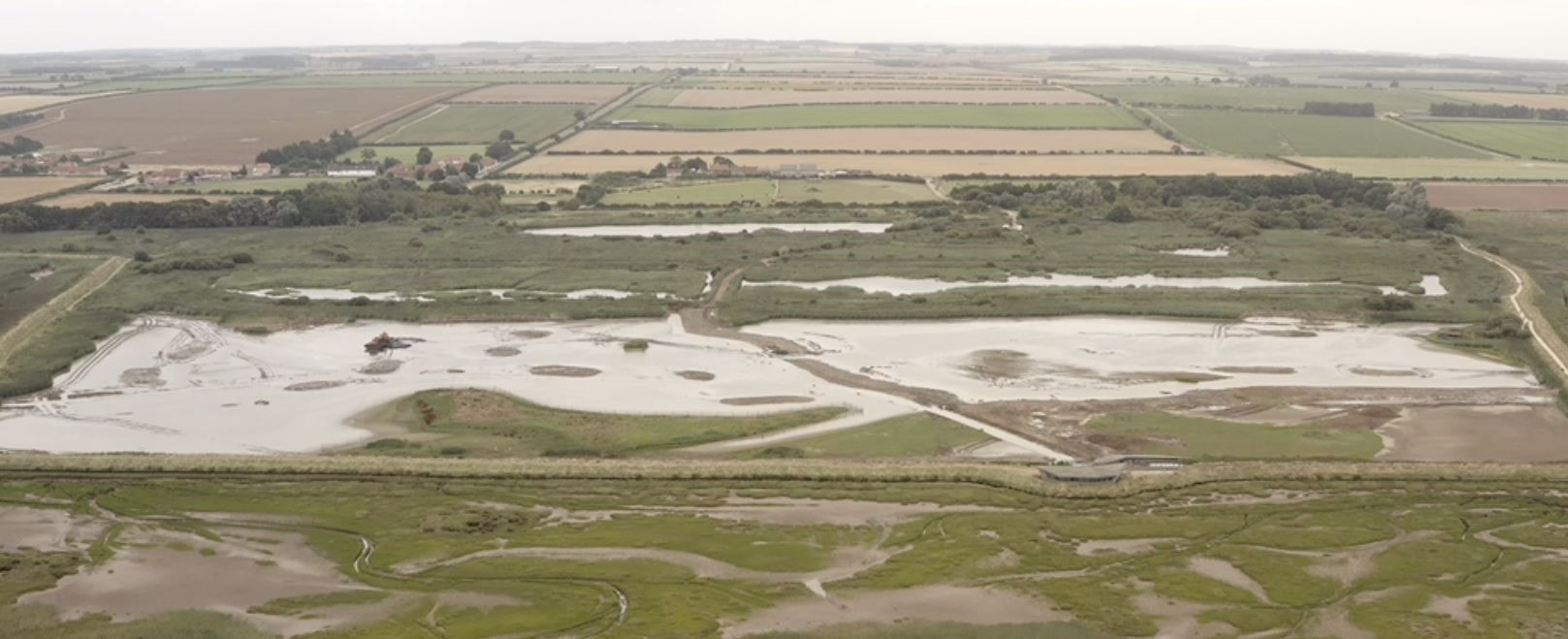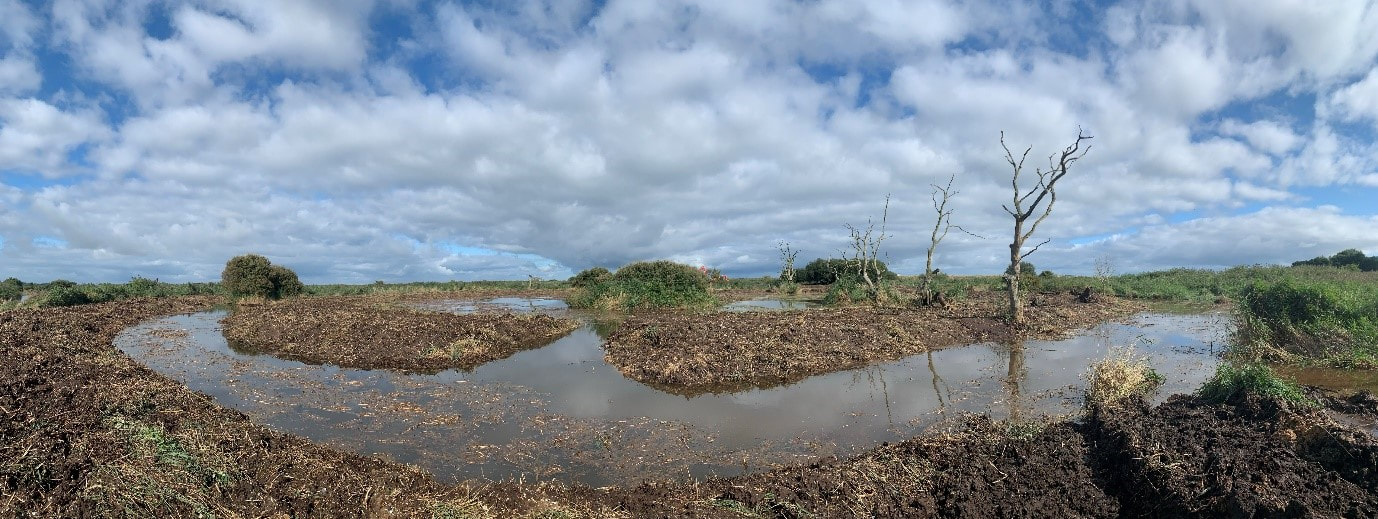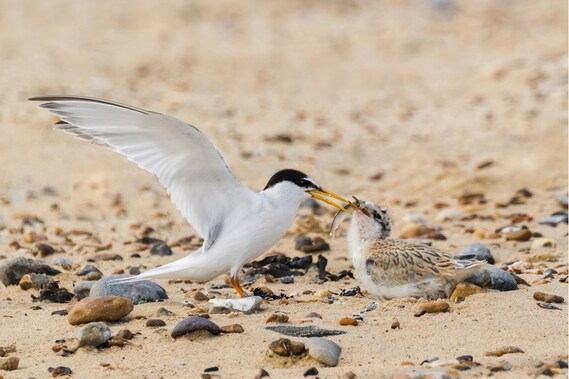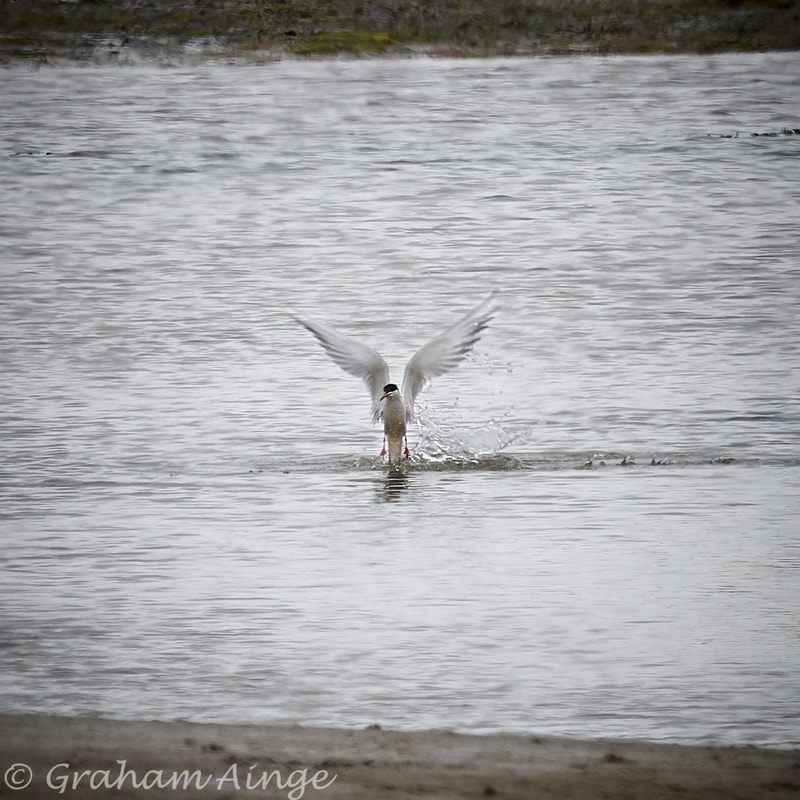|
Blog by Lizzie Bruce, NW Norfolk Reserves Warden Ten years ago, the Titchwell Marsh Coastal Change project was completed to protect the freshwater habitats from coastal erosion and rising sea levels. The project realigned and strengthened the sea defences that surround the freshwater marsh and reedbed and a new area of tidal saltmarsh, a natural sea defence, was created on the northern side of the Parrinder Bank. The completion of the Coastal Change project has safeguarded the freshwater habitats from saltwater incursion for generations to come. The time is now right to restore and enhance the freshwater habitats within for the wetland species that are dependant upon this habitat. The freshwater marsh is home to the iconic avocet and acts as an important service station for migrating waders. In August, using two amphibious excavators, the single freshwater marsh compartment was split into three with new water control structures installed. This will allow the freshwater marsh to be managed on a constant rotational basis ensuring a plentiful supply of food for breeding avocets, migrating waders and wintering wildfowl. In addition, a series of new nesting islands has been created and a new predator fence installed to improve the breeding success of avocets and common terns but could also attract new breeding birds for the reserve, such as sandwich terns. The second part of the project aims at restoring the freshwater reedbed. The reedbed at RSPB Titchwell Marsh was integral in ensuring the bittern didn’t become extinct in the UK when their population dropped to just 11 booming males in the 1990’s. However, despite the overall conservation success of this species in the UK with more than 200 booming males today, RSPB Titchwell Marsh has not recorded a breeding pair for 10 years. This project will restore the freshwater reedbed by repairing eroded banks, recreating a network of ditches and ponds, and installing new water control structures. The restoration work will improve the habitat to not just benefit bitterns but enhance the wetland for other species such as bearded tits, water voles, eels and a variety of invertebrates. An exciting element of the reedbed restoration will be one of the first of its kind in the UK; to create ‘Spoonbill Islands’ for the small but growing breeding population of spoonbills in the UK, and on the Norfolk coast. A series of islands surrounded by a moat have been created which will then be planted with a mixture of trees to create scrubby islands for spoonbills to nest in. Spoonbills were once a common sight in East Anglia featuring in medieval banquets. But as the Fenlands were drained, these distinctive birds lost their home and became a desirable species for egg collectors and hunters, resulting in them becoming extinct in 1668. As the Dutch population rapidly grew, in 1999 the first pair for 300 years bred in the UK, but it took a further 11 years for a colony to form at Holkham National Nature Reserve in Norfolk. They have since become a regular site on the Norfolk coast including at Titchwell Marsh. The project commenced in August 2021 and will be completed by the end of October, in readiness for the arrival of the wintering wildfowl.
0 Comments
Blog by Kieren Alexander, Site Manager for RSPB Old Hall Marshes Work will shortly commence on an exciting project at Horsey Island in Essex to secure and enhance the most important little tern colony in Essex. Using sand and shingle materials from the major channel deepening conducted by Harwich Haven. Funded by the EU Life+ project and the Environment Agency and with a major contribution from Harwich Haven Authority. This project aims to secure the future of the most important little tern colony in Essex, ensuring that it is secure from climate change and sea level rise for the next 50 years. Horsey Island is a private island in the north of Essex, it was first recharged in the 1990’s using sand and shingle from a previous deepening operation conducted by Harwich Haven Authority. More recently it has evolved into the most important little tern colony in Essex, ably wardened by the Ranger employed by Tendring District Council. Its unique offshore location means that it is relatively free of disturbance from people and mammalian predators this has allowed little terns to thrive and develop a productive colony. However, over time the beach has moved westward and landwards and gradually flattened out. This has meant the beach is increasingly vulnerable to high tide events especially over the breeding season. This means that to ensure that we can continue to provide habitat for little terns we need to recharge the recharge. Drone footage of the beach at Horsey Island, taken before the recharge operation. Credit: RSPB & Jim Pullen This is done by dredging sand and shingle then transporting it to the island, it is then deposited either via blowing it out over the bow or connecting a pipe and pumping it directly on to the foreshore. This is then moved around by the wind and tides until it settles on the existing beach raising the beach. This type of scheme is also known as a beneficial reuse scheme.
Not only will this project secure the future of the little tern colony, but it will also help to reduce erosion of saltmarsh, also a valuable and protected habitat. It will also maintain Horsey’s role as a wave break in the embayment, absorbing wave energy and helping to maintain the socio and economic and recreational opportunities this wonderful part of the Essex coast supports. The work is due to commence on or around the 30th of September and will last approximately a month. We will be updating the blog during the operation to track progress. Huge thanks to all our volunteers who help protect our breeding and wintering coastal birds! 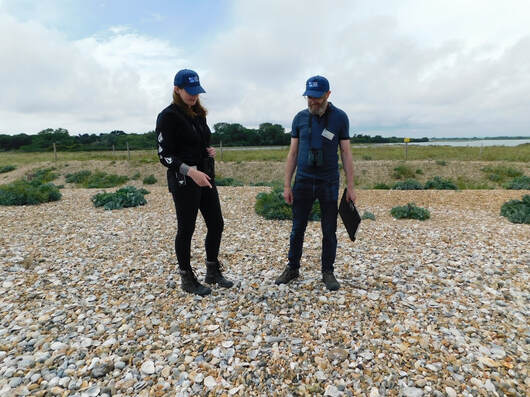 Our Beach Nesting Bird volunteers at RSPB Pagham Harbour discussing the challenges shorebirds face and why it is important for visitors to give them space. Here, they have been using a model Little Tern and photos of nests to help show how vulnerable to disturbance beach nesting birds can be. Photo Credit: Sophie Yeomanson This guest blog is by Alex who kindly shares her experience of volunteering. Why get involved? When you have been busy working for other people, there is nothing more rewarding than working for wildlife. I started volunteering with the RSPB 4 years ago when I retired and was looking for some sort of activity to keep me busy. To say I have been on a steep learning curve would be an understatement. Up until then, I had not marvelled at a pair of owlets, peered into a bee nesting hole, or observed sea birds diving into the lagoon for food. I knew very little about the natural world, so volunteering allowed me to learn at my own pace. This past spring and summer I joined the beach nesting bird team at RSPB Pagham Harbour and Medmerry with my husband. Whilst I was chatting to people visiting and giving them information to take home, my husband was using his camera to capture the wildlife in all its glory! I love sharing my knowledge of the wildlife to visitors, especially to the children who are so eager to learn. No dinosaurs seen yet though! I also love being part of a great team of people who share their knowledge and experiences with me. Favourite part of being with the Beach Nesting Bird team?
“I especially enjoyed engaging with inquisitive kids that wanted to “spot the tern” and then know more. I liked speaking to people who were interested in what we are trying to achieve.” How can you help? We are looking to expand this team across the wider Solent area in time for the next breeding season to help safeguard other nesting sites and provide a joined-up network of safe spaces for seabirds and beach nesting waders. Find out how to get involved here: https://www.rspb.org.uk/get-involved/volunteering-fundraising/volunteer/ Or you can enquire through the LIFE on the Edge website: https://www.projectlote.life/ |
Archives
April 2024
Categories
All
Photo credits: Oystercatcher by Katie Nethercoat (rspb-images.com)
LOTE Logo credits: Saskia Wischnewski |

